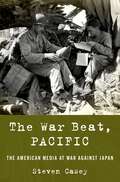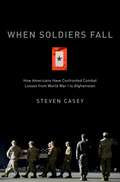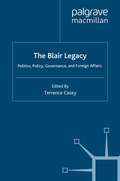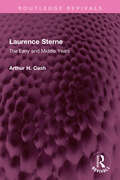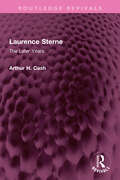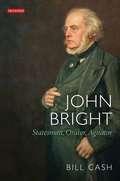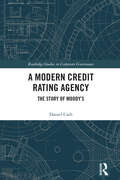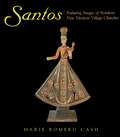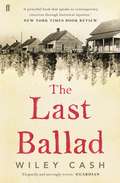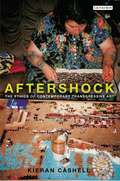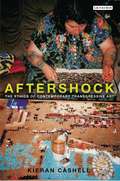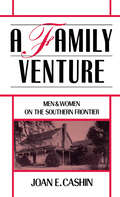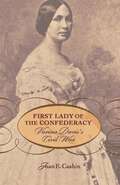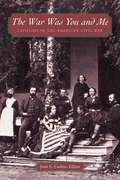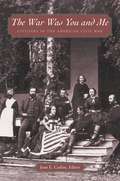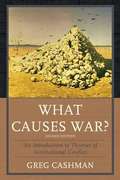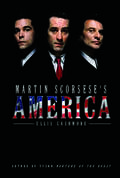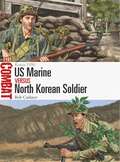- Table View
- List View
The War Beat, Pacific: The American Media at War Against Japan
by Steven CaseyThe definitive history of American war reporting in the Pacific theater of World War II, from the attack on Pearl Harbor to the atomic bombings of Hiroshima and Nagasaki. After almost two years slogging with infantrymen through North Africa, Italy, and France, Ernie Pyle immediately realized he was ill-prepared for covering the Pacific War. As Pyle and other war correspondents discovered, the climate, the logistics, and the sheer scope of the Pacific theater had no parallel in the war America was fighting in Europe. From Pearl Harbor to Hiroshima and Nagasaki, The War Beat, Pacific provides the first comprehensive account of how a group of highly courageous correspondents covered America's war against Japan, what they witnessed, what they were allowed to publish, and how their reports shaped the home front's perception of some of the most pivotal battles in American military history. In a dramatic and fast-paced narrative based on a wealth of previously untapped primary sources, Casey takes us from MacArthur's doomed defense on the Philippines and the navy's overly strict censorship policy at the time of Midway, through the bloody battles on Guadalcanal, New Guinea, Tarawa, Saipan, Leyte and Luzon, Iwo Jima and Okinawa, detailing the cooperation, as well as conflict, between the media and the military, as they grappled with the enduring problem of limiting a free press during a period of extreme crisis. The War Beat, Pacific shows how foreign correspondents ran up against practical challenges and risked their lives to get stories in a theater that was far more challenging than the war against Nazi Germany, while the US government blocked news of the war against Japan and tried to focus the home front on Hitler and his atrocities.
The War Beat, Pacific: The American Media at War Against Japan
by Steven CaseyThe definitive history of American war reporting in the Pacific theater of World War II, from the attack on Pearl Harbor to the atomic bombings of Hiroshima and Nagasaki. After almost two years slogging with infantrymen through North Africa, Italy, and France, Ernie Pyle immediately realized he was ill-prepared for covering the Pacific War. As Pyle and other war correspondents discovered, the climate, the logistics, and the sheer scope of the Pacific theater had no parallel in the war America was fighting in Europe. From Pearl Harbor to Hiroshima and Nagasaki, The War Beat, Pacific provides the first comprehensive account of how a group of highly courageous correspondents covered America's war against Japan, what they witnessed, what they were allowed to publish, and how their reports shaped the home front's perception of some of the most pivotal battles in American military history. In a dramatic and fast-paced narrative based on a wealth of previously untapped primary sources, Casey takes us from MacArthur's doomed defense on the Philippines and the navy's overly strict censorship policy at the time of Midway, through the bloody battles on Guadalcanal, New Guinea, Tarawa, Saipan, Leyte and Luzon, Iwo Jima and Okinawa, detailing the cooperation, as well as conflict, between the media and the military, as they grappled with the enduring problem of limiting a free press during a period of extreme crisis. The War Beat, Pacific shows how foreign correspondents ran up against practical challenges and risked their lives to get stories in a theater that was far more challenging than the war against Nazi Germany, while the US government blocked news of the war against Japan and tried to focus the home front on Hitler and his atrocities.
When Soldiers Fall: How Americans Have Confronted Combat Losses from World War I to Afghanistan
by Steven CaseyCall it the Vietnam Syndrome or Black Hawk Down blowback. It's the standard assumption that Americans won't tolerate combat casualties, that a rising body count lowers support for war. But that's not true, argues historian Steven Casey; even worse, this assumption damages democracy. Fearing a backlash, the military has routinely distorted its casualty reports in order to hide the true cost of war. When Soldiers Fall takes a new look at the way Americans have dealt with the toll of armed conflict. Drawing on a vast array of sources, from George Patton's command papers to previously untapped New York Times archives, Casey ranges from World War I (when the U.S. government first began to report casualties) to the War on Terror, examining official policy, the press, and the public reaction. Not surprisingly, leaders from Douglas MacArthur to Donald Rumsfeld have played down casualties. But the reverse has sometimes been true. At a crucial moment in World War II, the military actually exaggerated casualties to counter the public's complacency about ultimate victory. More often, though, official announcements have been unclear, out of date, or deliberately misleading--resulting in media challenges. In World War I, reporters had to rely on figures published by the enemy; in World War II, the armed forces went for an entire year without releasing casualty tallies. Casey discusses the impact of changing presidential administrations, the role of technology, the dispersal of correspondents to cover multiple conflicts, and the enormous improvements in our ability to identify bodies. Recreating the controversies that have surrounded key battles, from the Meuse-Argonne to the Tet Offensive to Fallujah, the author challenges the formula that higher losses lower support for war. Integrating military, political, and media history, When Soldiers Fall provides the first in-depth account of the impact of battlefield losses in America.
When Soldiers Fall: How Americans Have Confronted Combat Losses from World War I to Afghanistan
by Steven CaseyCall it the Vietnam Syndrome or Black Hawk Down blowback. It's the standard assumption that Americans won't tolerate combat casualties, that a rising body count lowers support for war. But that's not true, argues historian Steven Casey; even worse, this assumption damages democracy. Fearing a backlash, the military has routinely distorted its casualty reports in order to hide the true cost of war. When Soldiers Fall takes a new look at the way Americans have dealt with the toll of armed conflict. Drawing on a vast array of sources, from George Patton's command papers to previously untapped New York Times archives, Casey ranges from World War I (when the U.S. government first began to report casualties) to the War on Terror, examining official policy, the press, and the public reaction. Not surprisingly, leaders from Douglas MacArthur to Donald Rumsfeld have played down casualties. But the reverse has sometimes been true. At a crucial moment in World War II, the military actually exaggerated casualties to counter the public's complacency about ultimate victory. More often, though, official announcements have been unclear, out of date, or deliberately misleading--resulting in media challenges. In World War I, reporters had to rely on figures published by the enemy; in World War II, the armed forces went for an entire year without releasing casualty tallies. Casey discusses the impact of changing presidential administrations, the role of technology, the dispersal of correspondents to cover multiple conflicts, and the enormous improvements in our ability to identify bodies. Recreating the controversies that have surrounded key battles, from the Meuse-Argonne to the Tet Offensive to Fallujah, the author challenges the formula that higher losses lower support for war. Integrating military, political, and media history, When Soldiers Fall provides the first in-depth account of the impact of battlefield losses in America.
The Blair Legacy: Politics, Policy, Governance, and Foreign Affairs
by T. CaseyExploring how Tony Blair and New Labour changed British politics, policy, governance and foreign affairs, this volume stands as a key actor on the world and domestic stage, delving into Blair's foreign policy legacy, with empahsis on the Iraq War and Anglo-American relations.
Laurence Sterne: The Early and Middle Years (Routledge Revivals)
by Arthur CashFirst published in 1975, Laurence Sterne is biography of Sterne’s life which emphasizes those experiences which informed Sterne’s fiction. The book is based on an exhaustive search for original documents, and a study of the social, political, and ecclesiastical institutions which shaped Sterne’s world. We see the novelist as a soldier’s child, student, struggling young cleric, Yorkshire famer, and judge of the spiritual courts, and we trace his literary development from political hack to humourist. The story begins – like Tristram’s – with the subject’s conception and ends with the publication of Volumes I and II of Tristram Shandy. This book will be of interest to students of literature, literary history as well as to any casual reader of Sterne’s novels.
Laurence Sterne: The Later Years (Routledge Revivals)
by Arthur CashFirst published in 1986, Laurence Sterne follows Sterne’s life and career from the moment of recognition brought by the successful publication of the first two volumes of Tristram Shandy, to the publication in 1768 of A Sentimental Journey and its author’s death three weeks later. Sterne, a consumptive who knew that he would meet an early death, was determined to pack into his life all the writing, adventure and play he could, believing implicitly ‘that every time a man smiles, -- but much more so, when he laughs, that it adds something to this Fragment of Life.’ We see him in his study at Shandy Hall, among the philosophes in Paris, with his family at Toulouse and Montpellier, preaching before the villagers of Coxworld or before the duke of York, and entertaining the bluestockings, the intellectuals, the wits and rakes of 18th century London. We witness Sterne’s struggle, after sailing through the early volumes of Tristram Shandy, to find ways to continue or complete the novel. We watch the disintegration of any meaningful relationship with his wife, his secret amours, his public sentimental flirtations and his hopeless passion for Eliza Draper. This book will be of interest to students of literature, literary history as well as to any casual reader of Sterne’s novels.
Laurence Sterne: The Later Years (Routledge Revivals)
by Arthur CashFirst published in 1986, Laurence Sterne follows Sterne’s life and career from the moment of recognition brought by the successful publication of the first two volumes of Tristram Shandy, to the publication in 1768 of A Sentimental Journey and its author’s death three weeks later. Sterne, a consumptive who knew that he would meet an early death, was determined to pack into his life all the writing, adventure and play he could, believing implicitly ‘that every time a man smiles, -- but much more so, when he laughs, that it adds something to this Fragment of Life.’ We see him in his study at Shandy Hall, among the philosophes in Paris, with his family at Toulouse and Montpellier, preaching before the villagers of Coxworld or before the duke of York, and entertaining the bluestockings, the intellectuals, the wits and rakes of 18th century London. We witness Sterne’s struggle, after sailing through the early volumes of Tristram Shandy, to find ways to continue or complete the novel. We watch the disintegration of any meaningful relationship with his wife, his secret amours, his public sentimental flirtations and his hopeless passion for Eliza Draper. This book will be of interest to students of literature, literary history as well as to any casual reader of Sterne’s novels.
Laurence Sterne: The Early and Middle Years (Routledge Revivals)
by Arthur CashFirst published in 1975, Laurence Sterne is biography of Sterne’s life which emphasizes those experiences which informed Sterne’s fiction. The book is based on an exhaustive search for original documents, and a study of the social, political, and ecclesiastical institutions which shaped Sterne’s world. We see the novelist as a soldier’s child, student, struggling young cleric, Yorkshire famer, and judge of the spiritual courts, and we trace his literary development from political hack to humourist. The story begins – like Tristram’s – with the subject’s conception and ends with the publication of Volumes I and II of Tristram Shandy. This book will be of interest to students of literature, literary history as well as to any casual reader of Sterne’s novels.
John Bright: Statesman, Orator, Agitator
by Bill CashJohn Bright was one of the greatest British statesmen of the nineteenth century. In a series of Punch cartoons in 1878, Bright featured alongside Disraeli and Gladstone as among the most influential politicians of the age. However, his profound contribution to British politics and society has been virtually forgotten in the modern world.Bright played a critical role in many of the most important political movements of the Victorian era, from the repeal of the Corn Laws to Home Rule. In his great campaign leading up to the Reform Act 1867, he fought for parliamentary reform on behalf of the working class and for the abolition of newspaper taxes. Internationally renowned as an orator, he was a dedicated opponent of slavery and champion of the North in the American Civil War. His testimonial for Abraham Lincoln's re-election was found in the President's pocket on his assassination. He was vigorously opposed to the Crimean War and campaigned against the oppression of the Irish tenantry and colonial subjects throughout the Empire. Fiercely independent, he eventually split from the Liberal Party over Home Rule, becoming a Liberal Unionist.In this new biography, the first for over 30 years, Bill Cash provides an incisive and engaging portrait of a man who influenced the politics of his generation more than virtually any other, with important implications for the present day.
A Modern Credit Rating Agency: The Story of Moody’s (Routledge Studies in Corporate Governance)
by Daniel CashThis book aims to present a picture of one of the world’s leading credit rating agencies. Credited as being the first credit rating agency, Moody’s stands as the epitome of the rating sector and all that it effects. However, outside of internal and non-public histories compiled within the rating agency itself, the story of Moody’s has never been told, until now. However, this is not a historical book. Rather, this book paints a picture of Moody’s on a wider canvas that introduces the concept of rating to you, taking into account the origins of the sector, the competitive battles that formed the modern-day oligopoly, and the characters that have each taken their turn on sculpting the industry that, today, is critical to the modern economy.The book is a story of personable people who provided the market with what it needed, but it is more than that. It is a story of conflict, impact, strategy, and most of all the relationship between big business and modern society. Standing as the gatekeeper to the capital markets that form the core of modern society, Moody’s represents the very best of what the marketplace can produce, but also the very worst. This story takes in economic crises in the antebellum US, the Panics of the early 1900s, the Wall Street Crash and the Great Depression and, of course, the Global Financial Crisis. It does this because, at the heart of each one was a member of the rating industry or the reporting industry that preceded it. Associated with almost any financial scandal you may care to remember the credit rating agencies, in their often-uncomfortable role as gatekeepers, have their fingerprints on most financial scandals and calamities. This book tells the story of the industry’s founding member.
A Modern Credit Rating Agency: The Story of Moody’s (Routledge Studies in Corporate Governance)
by Daniel CashThis book aims to present a picture of one of the world’s leading credit rating agencies. Credited as being the first credit rating agency, Moody’s stands as the epitome of the rating sector and all that it effects. However, outside of internal and non-public histories compiled within the rating agency itself, the story of Moody’s has never been told, until now. However, this is not a historical book. Rather, this book paints a picture of Moody’s on a wider canvas that introduces the concept of rating to you, taking into account the origins of the sector, the competitive battles that formed the modern-day oligopoly, and the characters that have each taken their turn on sculpting the industry that, today, is critical to the modern economy.The book is a story of personable people who provided the market with what it needed, but it is more than that. It is a story of conflict, impact, strategy, and most of all the relationship between big business and modern society. Standing as the gatekeeper to the capital markets that form the core of modern society, Moody’s represents the very best of what the marketplace can produce, but also the very worst. This story takes in economic crises in the antebellum US, the Panics of the early 1900s, the Wall Street Crash and the Great Depression and, of course, the Global Financial Crisis. It does this because, at the heart of each one was a member of the rating industry or the reporting industry that preceded it. Associated with almost any financial scandal you may care to remember the credit rating agencies, in their often-uncomfortable role as gatekeepers, have their fingerprints on most financial scandals and calamities. This book tells the story of the industry’s founding member.
Santos: Enduring Images of Northern New Mexican Village Churches
by Marie Romero CashRichly illustrated with examples of eighteenth- and nineteenth-century art from northern New Mexico's village churches, Santos is an in-depth investigation into the artistic heritage of the New Mexican santero (saint maker). It is also an important study of northern New Mexican artisans and their craft. Along with photographer Jack Parsons, Marie Romero Cash visited every church in the region and documented, identified, and measured each santos. Together they photographed more than 500 pieces, including 19 moradas (places of worship for Penitentes) and the Archdiocese of Santa Fe Collection housed at the Museum of International Folk Art. Cash's extensive research into these formerly "anonymous" artisans fills a gap in the study of this unique form, making Santos indispensable for art historians and the general reader interested in the culture and art of the American Southwest.
The Last Ballad: A Novel
by Wiley CashInspired by actual events, The Last Ballad is a moving tale of courage in the face of oppression, with all the emotional power of Cold Mountain and The Secret Scripture'A powerful book that speaks to contemporary concerns through historical injustice. Cash vividly blends the archival with the imaginative.' New York Times Book ReviewFor twenty-eight-year-old Ella May Wiggins life is tough. Her no-good husband, John, has run off again, and she must keep her four young children alive with the only work she can find, the night shift at American Mill No. 2 in Bessemer City, North CarolinaWhen union leaflets begin circulating, Ella May has a taste of hope, a yearning for the better life the organizers promise. But the mill owners, backed by other nefarious forces, claim the union is nothing but a front for the Bolshevik menace sweeping across Europe. To maintain their control, the owners will use every means in their power, including bloodshed, to prevent workers from banding together. Seventy-five years later, Ella May's daughter Lilly, now an elderly woman, tells her nephew about his grandmother and the events that transformed their family forever. Paying tribute to the thousands of heroic women and men who risked their lives to win basic rights for all workers, The Last Ballad is lyrical, heartbreaking and haunting, and the novel which confirms Wiley Cash's place among America's finest writers.
Aftershock: The Ethics of Contemporary Transgressive Art
by Kieran CashellAccused by the tabloid press of setting out to 'shock', controversial artworks are vigorously defended by art critics, who frequently downplay their disturbing emotional impact. This is the first book to subject contemporary art to a rigorous ethical exploration. It argues that, in favouring conceptual rather than emotional reactions, commentators actually fail to engage with the work they promote. Scrutinising notorious works by artists including Damien Hirst, Jake and Dinos Chapman, Richard Billingham, Marc Quinn, Sally Mann, Marcus Harvey, Hans Bellmer, Paul McCarthy, Tierney Gearon, and Tracey Emin, "Aftershock" insists on the importance of visceral, emotional and 'ethical' responses. Far from clouding our judgement, Cashell argues, shame, outrage or revulsion are the very emotions that such works set out to evoke. While also questioning the catch-all notion of 'transgression', this illuminating and controversial book neither jumps indiscriminately to the defence of shocking artworks nor dismisses them out of hand.
Aftershock: The Ethics of Contemporary Transgressive Art
by Kieran CashellAccused by the tabloid press of setting out to 'shock', controversial artworks are vigorously defended by art critics, who frequently downplay their disturbing emotional impact. This is the first book to subject contemporary art to a rigorous ethical exploration. It argues that, in favouring conceptual rather than emotional reactions, commentators actually fail to engage with the work they promote. Scrutinising notorious works by artists including Damien Hirst, Jake and Dinos Chapman, Richard Billingham, Marc Quinn, Sally Mann, Marcus Harvey, Hans Bellmer, Paul McCarthy, Tierney Gearon, and Tracey Emin, 'Aftershock' insists on the importance of visceral, emotional and 'ethical' responses. Far from clouding our judgement, Cashell argues, shame, outrage or revulsion are the very emotions that such works set out to evoke. While also questioning the catch-all notion of 'transgression', this illuminating and controversial book neither jumps indiscriminately to the defence of shocking artworks nor dismisses them out of hand.'Kieran Cashell discusses artists who use everything from soiled bed linens to blood to dead sharks in their works. Drawing on an impressive array of philosophical ideas, Cashell helps viewers tackle the messy details of art by Damien Hirst, Orlan, Marc Quinn, Tracy Emin, and more, as he provides a probing and subtle defense of the moral value of such recent "transgressive" art.'- Cynthia A. Freeland Professor and Chair, Department of Philosophy University of Houston, Texas
A Family Venture: Men and Women on the Southern Frontier
by Joan E. CashinThis book is about the different ways that men and women experienced migration from the Southern seaboard to the antebellum Southern frontier. Based upon extensive research in planter family papers, Cashin studies how the sexes went to the frontier with diverging agendas: men tried to escape the family, while women tried to preserve it. On the frontier, men usually settled far from relatives, leaving women lonely and disoriented in a strange environment. As kinship networks broke down, sex roles changed, and relations between men and women became more inequitable. Migration also changed race relations, because many men abandoned paternalistic race relations and abused their slaves. However, many women continued to practice paternalism, and a few even sympathized with slaves as they never had before. Drawing on rich archival sources, Cashin examines the decision of families to migrate, the effects of migration on planter family life, and the way old ties were maintained and new ones formed.
First Lady of the Confederacy: Varina Davis’s Civil War
by Joan E. CashinWhen Jefferson Davis became president of the Confederacy, his wife, Varina Howell Davis, reluctantly became the First Lady. For this highly intelligent, acutely observant woman, loyalty did not come easily: she spent long years struggling to reconcile her societal duties to her personal beliefs. Raised in Mississippi but educated in Philadelphia, and a long-time resident of Washington, D.C., Mrs. Davis never felt at ease in Richmond. During the war she nursed Union prisoners and secretly corresponded with friends in the North. Though she publicly supported the South, her term as First Lady was plagued by rumors of her disaffection. After the war, Varina Davis endured financial woes and the loss of several children, but following her husband's death in 1889, she moved to New York and began a career in journalism. Here she advocated reconciliation between the North and South and became friends with Julia Grant, the widow of Ulysses S. Grant. She shocked many by declaring in a newspaper that it was God's will that the North won the war. A century after Varina Davis's death in 1906, Joan E. Cashin has written a masterly work, the first definitive biography of this truly modern, but deeply conflicted, woman. Pro-slavery but also pro-Union, Varina Davis was inhibited by her role as Confederate First Lady and unable to reveal her true convictions. In this pathbreaking book, Cashin offers a splendid portrait of a fascinating woman who struggled with the constraints of her time and place.
War Matters: Material Culture in the Civil War Era
by Joan E. CashinMaterial objects lie at the crux of understanding individual and social relationships in history, and the Civil War era is no exception. Before, during, and after the war, Americans from all walks of life created, used, revered, exploited, discarded, mocked, and destroyed objects for countless reasons. These objects had symbolic significance for millions of people. The essays in this volume consider a wide range of material objects, including weapons, Revolutionary artifacts, landscapes, books, vaccine matter, human bodies, houses, clothing, and documents. Together, the contributors argue that an examination of the meaning of material objects can shed new light on the social, economic, and cultural history of the conflict. This book will fundamentally reshape our understanding of the war. In addition to the editor, contributors include Lisa M. Brady, Peter S. Carmichael, Earl J. Hess, Robert D. Hicks, Victoria E. Ott, Jason Phillips, Timothy Silver, Yael A. Sternhell, Sarah Jones Weicksel, Mary Saracino Zboray, and Ronald J. Zboray.
The War Was You and Me: Civilians in the American Civil War
by Joan E. CashinThough civilians constituted the majority of the nation's population and were intimately involved with almost every aspect of the war, we know little about the civilian experience of the Civil War. That experience was inherently dramatic. Southerners lived through the breakup of basic social and economic institutions, including, of course, slavery. Northerners witnessed the reorganization of society to fight the war. And citizens of the border regions grappled with elemental questions of loyalty that reached into the family itself. These original essays--all commissioned from established scholars, based on archival research, and written for a wide readership--recover the stories of civilians from Natchez to New England. They address the experiences of men, women, and children; of whites, slaves, and free blacks; and of civilians from numerous classes. Not least of these stories are the on-the-ground experiences of slaves seeking emancipation and the actions of white Northerners who resisted the draft. Many of the authors present brand new material, such as the war's effect on the sounds of daily life and on reading culture. Others examine the war's premiere events, including the battle of Gettysburg and the Lincoln assassination, from fresh perspectives. Several consider the passionate debate that broke out over how to remember the war, a debate that has persisted into our own time. In addition to the editor, the contributors are Peter W. Bardaglio, William Blair, W. Fitzhugh Brundage, Margaret S. Creighton, J. Matthew Gallman, Joseph T. Glatthaar, Anthony E. Kaye, Robert Kenzer, Elizabeth D. Leonard, Amy E. Murrell, George C. Rable, Nina Silber, Mark M. Smith, Mary Saracino Zboray, and Ronald J. Zboray. Together they describe the profound transformations in community relations, gender roles, race relations, and culture wrought by the central event in American history.
The War Was You and Me: Civilians in the American Civil War
by Joan E. CashinThough civilians constituted the majority of the nation's population and were intimately involved with almost every aspect of the war, we know little about the civilian experience of the Civil War. That experience was inherently dramatic. Southerners lived through the breakup of basic social and economic institutions, including, of course, slavery. Northerners witnessed the reorganization of society to fight the war. And citizens of the border regions grappled with elemental questions of loyalty that reached into the family itself. These original essays--all commissioned from established scholars, based on archival research, and written for a wide readership--recover the stories of civilians from Natchez to New England. They address the experiences of men, women, and children; of whites, slaves, and free blacks; and of civilians from numerous classes. Not least of these stories are the on-the-ground experiences of slaves seeking emancipation and the actions of white Northerners who resisted the draft. Many of the authors present brand new material, such as the war's effect on the sounds of daily life and on reading culture. Others examine the war's premiere events, including the battle of Gettysburg and the Lincoln assassination, from fresh perspectives. Several consider the passionate debate that broke out over how to remember the war, a debate that has persisted into our own time. In addition to the editor, the contributors are Peter W. Bardaglio, William Blair, W. Fitzhugh Brundage, Margaret S. Creighton, J. Matthew Gallman, Joseph T. Glatthaar, Anthony E. Kaye, Robert Kenzer, Elizabeth D. Leonard, Amy E. Murrell, George C. Rable, Nina Silber, Mark M. Smith, Mary Saracino Zboray, and Ronald J. Zboray. Together they describe the profound transformations in community relations, gender roles, race relations, and culture wrought by the central event in American history.
What Causes War?: An Introduction To Theories Of International Conflict (PDF)
by Greg CashmanNow in a thoroughly revised and updated edition, this classic text presents a comprehensive survey of the many alternative theories that attempt to explain the causes of interstate war. For each theory, Greg Cashman examines the arguments and counterarguments, considers the empirical evidence and counterevidence generated by social-science research, looks at historical applications of the theory, and discusses the theory's implications for restraining international violence. Among the questions he explores are: Are humans aggressive by nature? Do individual differences among leaders matter? How might poor decision making procedures lead to war? Why do leaders engage in seemingly risky and irrational policies that end in war? Why do states with internal conflicts seem to become entangled in wars with their neighbors? What roles do nationalism and ethnicity play in international conflict? What kinds of countries are most likely to become involved in war? Why have certain pairs of countries been particularly war-prone over the centuries? Can strong states deter war? Can we find any patterns in the way that war breaks out? How do balances of power or changes in balances of power make war more likely? Do social scientists currently have an answer to the question of what causes war? Cashman examines theories of war at the individual, substate, nation-state, dyadic, and international systems level of analysis. Written in a clear and accessible style, this interdisciplinary text will be essential reading for all students of international relations.
Martin Scorsese's America (America Through the Lens)
by Ellis CashmoreFor over four decades, Martin Scorsese has been the chronicler of an obsessive society, where material possessions and physical comfort are valued, where the pursuit of individual improvement is rewarded and where male prerogative is respected and preserved. Scorsese has often described his films as sociology and he has a point: his storytelling condenses complex information into comprehensible narratives about society. In this sense, he has been a guide through a dark world of nineteenth century crypto-fascism to a fetishistic twentieth century in which goods, fame, money and power are held to have magical power. Author of Tyson: Nurture of the Beast and Beckham, Ellis Cashmore turns his attention to arguably the most influential living film- maker to explore how Scorsese envisions America. Greed, manhood, the city and romantic love feature on Scorsese's landscape of secular materialism. They are among the themes Cashmore argues have driven and inform Scorsese's work. This is America, as seen through the eyes of Martin Scorsese and it is a deeply unpleasant place. Cashmore's book discloses how, collectively, Scorsese's films present an image of America. It's an image assembled from the perspectives of obsessive people, whether burned-out paramedics, compulsive entrepreneurs, tortured lovers, or celebrity-fixated comedians. It's collected from pool halls, taxicabs, boxing rings and jazz clubs. It's an image that's specific, yet ubiquitous. It is Martin Scorsese's America.
Martin Scorsese's America (America Through the Lens)
by Ellis CashmoreFor over four decades, Martin Scorsese has been the chronicler of an obsessive society, where material possessions and physical comfort are valued, where the pursuit of individual improvement is rewarded and where male prerogative is respected and preserved. Scorsese has often described his films as sociology and he has a point: his storytelling condenses complex information into comprehensible narratives about society. In this sense, he has been a guide through a dark world of nineteenth century crypto-fascism to a fetishistic twentieth century in which goods, fame, money and power are held to have magical power. Author of Tyson: Nurture of the Beast and Beckham, Ellis Cashmore turns his attention to arguably the most influential living film- maker to explore how Scorsese envisions America. Greed, manhood, the city and romantic love feature on Scorsese's landscape of secular materialism. They are among the themes Cashmore argues have driven and inform Scorsese's work. This is America, as seen through the eyes of Martin Scorsese and it is a deeply unpleasant place. Cashmore's book discloses how, collectively, Scorsese's films present an image of America. It's an image assembled from the perspectives of obsessive people, whether burned-out paramedics, compulsive entrepreneurs, tortured lovers, or celebrity-fixated comedians. It's collected from pool halls, taxicabs, boxing rings and jazz clubs. It's an image that's specific, yet ubiquitous. It is Martin Scorsese's America.
US Marine vs North Korean Soldier: Korea 1950 (Combat)
by Bob CashnerThis absorbing study casts light on the tactics, weapons and combat effectiveness of the US Marines and North Korean soldiers who fought one another in August and September 1950.Equipped with Soviet tanks and bolstered by a cadre of combat veterans returning from the Chinese Civil War, North Korea's army launched its surprise offensive against the Republic of Korea on 25 June 1950; within days Seoul had fallen and the majority of South Korea's divisions had been shattered. American ground troops rushed to Korea also seemed incapable of stopping the rapidly advancing North Koreans. By August, the remnants of the South Korean and US Army divisions had been pushed into a small corner around the port of Pusan, their backs to the sea. Time was also running out for the North Koreans; virtually all of their planning and preparations were based on a two-month campaign. Although the North Korean People's Army had enjoyed an impressive string of victories, its losses were no longer being replaced in the needed quantity or quality. It was truly a do-or-die moment for both sides.In the wake of World War II, the United States Marine Corps had shrunk from 473,000 men in 1945 to only 70,000 in 1950. Despite its heavily slashed budget and manpower, the Marine Corps responded swiftly and decisively. Active-duty Marines from all over the globe gathered and for once the Marine Corps even received some of the latest American military equipment; it was the Marines' esprit de corps that made the real difference, however. Using first-hand accounts and specially commissioned artwork, this study assesses the KPA and US Marine Corps troops participating in three crucial battles – Hill 342, the Obong-Ni Ridge and the Second Battle of Seoul – to reveal the tactics, weapons and combat effectiveness of both sides' fighting men in Korea in 1950.
